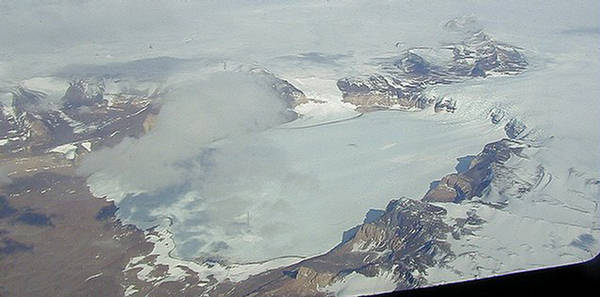Dry valleys in antarctica has not experienced rain or snow in nearly 2 million years

Dry Valleys in Antarctica: A Remarkable Oasis of Aridity

The Dry Valleys in Antarctica stand as a testament to the extreme and unforgiving conditions of this icy continent. Nestled amidst the Transantarctic Mountains, this extraordinary region has not experienced rain or snow for nearly 2 million years! Yes, you read that right. Raindrops and snowflakes have eluded this desolate landscape since a time long before our earliest ancestors roamed the Earth.
A Precipitation Paradox
Located on the eastern coast of McMurdo Sound, the Dry Valleys exhibit a truly mind-boggling phenomenon. Surrounded by enormous glaciers and vast expanses of ice, it seems counterintuitive for an area to be devoid of the very substance that characterizes Antarctica. While the rest of this frozen continent experiences some of the harshest snowfall on the planet, the Dry Valleys remain parched, with its aridity unmatched anywhere else in the world.
An Unveiling of Geological Time

Venturing into the Dry Valleys is akin to stepping back in time - a time long before the advent of civilization and the rise and fall of empires. The elusive absence of rainfall or snowfall for nearly 2 million years has frozen this region in an eternal epoch of geological history. The exposed rocks and ancient formations found in this stark desert of ice reveal the intricate fingerprints of time, etched and preserved over countless millennia.
Unraveling the Mystery: How Does it Endure?
While the mere thought of surviving without precipitation for such a colossal span of time may seem unfathomable, there are specific reasons behind this extraordinary phenomenon. The unique combination of factors that contribute to the perpetually dry conditions in the Dry Valleys includes the presence of powerful catabatic winds, the elevation of the valleys, and the protective shield provided by the Transantarctic Mountains.
Catabatic Winds: A Force to Be Reckoned With
Cascading down from the Antarctic interior, catabatic winds mercilessly sweep through the Dry Valleys, wreaking havoc and further eroding an already brittle landscape. These dense, cold air currents accelerate as they descend from the high inland plateaus, causing any moisture that might be present in the air to be carried away, leaving the valleys stripped of any chance of precipitation.
Rising Above: The Role of Elevation
The Dry Valleys, located at a higher altitude compared to the surrounding regions, enjoy a unique advantage in terms of moisture deprivation. As air masses lift when traversing the Transantarctic Mountains, they cool and condense, resulting in any moisture being stripped away, leaving the valleys even drier. This elevation effect further contributes to the astonishing aridity that has prevailed for millions of years.
Nature’s Protective Shield
The Transantarctic Mountains play a pivotal role in shielding the Dry Valleys from weather systems that would otherwise deliver rain or snow. Rising up to 4,000 meters, these imposing peaks act as a formidable barrier, preventing moisture-laden air masses from reaching this fragile desert of ice. As a result, the Dry Valleys remain locked in their perpetual state of dryness.
A Testament to the Astonishing Limits of Life
Despite its seemingly inhospitable conditions, the Dry Valleys have not discouraged life altogether. This exceptional region is home to resilient microorganisms that have adapted to survive in this unique habitat. These extremophiles, including bacteria, algae, and fungi, are capable of enduring the extreme cold, high salinity, and aridity that characterizes the Dry Valleys. Scientists study these remarkable life forms to unravel the mysteries of survival in such extreme environments and gain insights into the potential for life in similarly challenging conditions, both on Earth and beyond.
In conclusion, the Dry Valleys in Antarctica stand as a true marvel of nature. Their absence of rain or snow for nearly 2 million years has shaped a landscape frozen in time, offering unprecedented geological insights. The power of catabatic winds, the role of elevation, and the protective embrace of the Transantarctic Mountains create an extraordinary oasis of aridity. And amidst such harshness, life finds a way, showcasing the tenacity and resilience of our planet’s incredible biodiversity.
Related Posts
Quick Links
Legal Stuff

